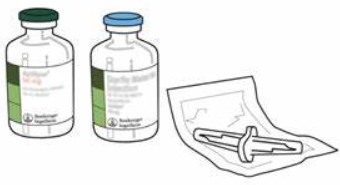NCLEX Test Taking Tips
Sometimes sheer hard work and mental preparation aren't sufficient when taking exams. The skill of answering exams or tests quickly is essential, especially when they're timed. Pressure often builds when time is running out, and even with thorough preparation, it can completely undermine your efforts. In this post, I have shared test-taking tips and strategies that are useful for any type of multiple-choice exam, including the NCLEX exams.
The Parts of a Question
the case (sometimes called scenario) – the description of the client and what is happening to him/her
the stem – the part of the question that asks the question the correct response
distracters – incorrect but feasible choices
Key Words
The most crucial skill for a test taker is the ability to carefully read the question and identify its key elements. Each question contains key words that pertain to the client, the problem, and specific details of the problem.
Client
Factors like age, sex, and marital status can be significant. When a child's age is mentioned, it is often crucial to the answer. Vital signs, preoperative teaching methods, and suitable toys or activities all differ based on age. Always take note of the client's age when it is provided. Additionally, consider who the client is in the question—whether it is the sick individual, a relative, or a staff member.
Problem/Behavior
The problem may be a disease, a symptom or a behavior.
Details of the Problem:
Is the question inquiring about nursing actions, client symptoms, or family reactions?
Does the question pertain to a specific aspect of nursing care such as assessment, planning, implementation, or evaluation?
Is the question focused on a particular symptom or behavior exhibited by the client?
Is there additional important information about the client or the problem that needs to be considered?
Priority Setting
"What action takes priority?"
"What should the nurse do first?"
"What is essential for the nurse to do?"
Physiological needs come first, followed by safety needs, then love and belonging, self-esteem, and self-actualization.
The first step in the nursing process is assessment. When a question asks for the initial nursing action, check if there is a relevant assessment answer. A nurse should only take action when there is sufficient data to do so. Call the physician only if no nursing action is required first. If the question asks for a nursing action, the correct response might be to assess.
When a question asks what is essential for the nurse to do, prioritize safety. Many test questions focus on safety.
Time Frame
Whenever a specific time frame is mentioned in a question, it is crucial to pay attention. Time-related terms might include early or late in relation to symptoms, preoperative or postoperative, care on the day of surgery, or later postoperative care.
Repeated Words
Words from the question often appear in the answer. Frequently, the same word or a synonym will be in both the question and the answer.
Opposites
When two answers are opposites, such as high blood pressure and low blood pressure, increasing the drip rate and stopping the IV, or turning on the right side and turning on the left side, the correct answer is usually one of the two.
Same Answer
If two or three answers express the same idea in different words, none of them can be correct. If the answers are too similar, then neither is correct.
Odd Answer Wins
The answer that stands out from the others is likely the correct one. It may be the longest, the shortest, or simply very different in content or style.
Umbrella Answer
One answer that encompasses the others is often the best choice. There may be more than one correct answer, but the best one includes all the others.
Test Item Check List
Use this handy list to check yourself every time you answer a test question.
Say to yourself, DID I CAREFULLY…
Read the stem?
Read all of the options?
Read the stem again?
Look for key words?
Eliminate obviously incorrect options?
Absolutes
Responses that include universal or absolute terms are likely to be incorrect. Few things in life or nursing are always right or wrong. Answers that are stated with absolute certainty should be approached with caution.
Deadly Words to Avoid
all
every
total
nothing
always
each
only
any
nobody
never
none
Dangerous Words to Avoid
main
chief
avoid
primarily
major
shall
inevitable
eliminate
rarely
impossible
too
Safe
usually
almost
frequently
probably
potentially
may
sometimes
partial
some
might
should
few
essentially
generally
occasionally
nearly
maybe
could
commonly
average
seldom
often
normally
.






















.png)